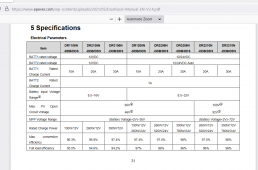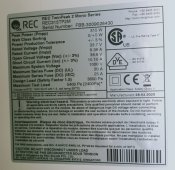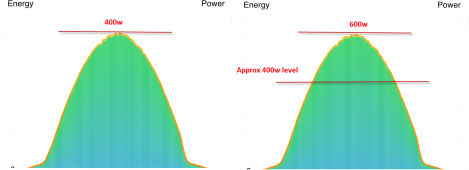I'm having trouble trying to figure out how literally I should take the specs for this MPPT (given all the talk of overpanelling etc).
This is what I have:
I plan on connecting two 12v 100ah batteries as BATT1, then repeat for BATT2. I'd like to use the batteries in parallel, keeping it at 12v.
The MPPT instructions read:
*Max. PV Input : 390W/12V
*Max. PV open circuit voltage: 100V
My spare panels range from 265w to 315w. As the "max input is 390w", can I somehow use two (or more?) panels, and get around the limits via wiring the panels in a certain way.
This is what I have:
I plan on connecting two 12v 100ah batteries as BATT1, then repeat for BATT2. I'd like to use the batteries in parallel, keeping it at 12v.
The MPPT instructions read:
*Max. PV Input : 390W/12V
*Max. PV open circuit voltage: 100V
My spare panels range from 265w to 315w. As the "max input is 390w", can I somehow use two (or more?) panels, and get around the limits via wiring the panels in a certain way.







